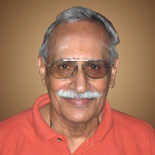|
Go to Part 8 III - Veda is another means of knowledge that is available (cont) While the knowledge is thus passed down the generations in every cycle of manifestation, Bhagavän Kåñëa in Bhagavadgétä (4.2) [43] talks of times when the knowledge declines. Çaìkaräcärya explains that the wane of the knowledge is owing to the rise of desire in the minds of people, which makes them pursue improper goals. Bhagavän [44].then takes avatära (descent to earth) to redeem the situation. Bhagavän Kåñëa is one such avatära and his teaching of Gétä to humanity through Arjuna is for resuscitation of atmajïäna and for the inculcation of values in living.
The sampradäya is also enlivened at critical times through persons born specifically to discharge special duties [45]. The seer Apäntaratamas was born in this manner as Kåñëa Dvaipäyana [46]. He compiles the voluminous Veda into four parts so that particular families could study one of them and hand it over to each succeeding generation. This earns him the name of Vedavyäsa or Vyäsäcärya. He also condenses the traditionally ascertained knowledge of Vedänta into aphorisms or sütras called the Brahmasütra. He also writes the epic Mahäbhärata and the Puräëas so that this knowledge may reach the laypersons as well [47].
Upaniñads, Bhagavadgétä and Brahmasütra are the three basic source books of Vedänta and are called prasthänatrayé. [48]. Upaniñad, which is revealed knowledge, is called çruti. [49] Brahmasütra and Bhagavadgétä (which is part of Mahäbhärata) are authored by Vyäsäcärya and are called småti or knowledge remembered by humans. In the case of doubt arising out of any statement in the småti, it is the vision of the çruti that clarifies.
The transmission of Veda is oral and it is ensured that during such transmission, the text does not suffer any corruption. The oral tradition is very sophisticated, consisting of manifold methods of combination of words for chanting [50] and through the science of pronunciation and euphony (çikñä).
IV - Vedanta is the means for self-knowledge Reverting to the subject of the means of acquiring self-knowledge, we have to first consider as to how Vedänta, which reveals self-knowledge is considered as a pramäëa, that is, as an independent source of reliable knowledge. A pramäëa is that which . provides the knowledge that can be obtained only through it and not by any other pramäëa;
Vedänta fulfils all these requirements. The knowledge revealed by it about the self cannot be known through any other means of knowledge like perception. Since other means of knowledge have no access to the self to know it, they cannot negate, amend or confirm Vedänta. Vedänta is also free from human errors, as it is revealed knowledge and is not the result of the working of the human intellect. It is free from doubt, as its central theme that we are the whole is stated in unequivocal terms. It is the most useful knowledge, as it removes self-ignorance, which is the cause of our sense of inadequacy, insecurity and unhappiness.
43.Sa käleneha mahatä yogo nañöaù, parantapa ...|Bhagavadgétä, 4.2. Go to Part 10
|
|||
|
|||


www.advaita.org.uk
Advaita for the 21st Century



Vedanta - Part 9
VEDĀNTA the solution to our fundamental problem
D. Venugopal

D. Venugopal is a student of Swami Paramarthananda and a direct disciple of Pujya Swami Dayananda. He has successfully completed the long-term residential course in Vedanta and Sanskrit conducted from May 2002 to July 2005 at the Arsha Vidya Gurukulam, Anaikatti.
Go to CONTENTS
Biography
Buy from Amazon UK
. Available from Bharatiya Vidya Bhavan centers at London, New York and Sydney.
. Also through the IBH Books & Magazines Distributors Pvt. Ltd. - contact contact@ibhworld.com. In case of difficulty,pvsankarankutty@bhavan.info can be contacted.
BOOK DETAILS
Publisher: Bharatiya Vidya Bhavan
ISBN: 978-81-7276-457-9
Format : Paperback
Pages: 324
List Price: US$7.00
Where to Buy
AUTHOR DETAILS

